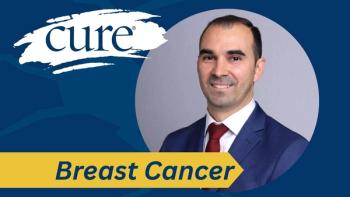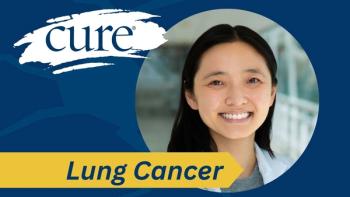
Standard Treatment With Adjustments May Extend Survival in Older Patients With AML
Patients aged 80 and older are often excluded from receiving the standard regimen for acute myeloid leukemia. However, research showed that some patients can tolerate the therapy.
Some older patients with acute myeloid leukemia (AML) may still benefit from the standard-of-care treatment. However, they are frequently deemed ineligible to receive it, because of the intensity of the regimen due to frailty and other health issues that come with old age, according to clinicians.
Recent research published in Blood Neoplasia found that some patients not only can tolerate the therapy, but experience increased survival from it, too.
“The take home is that [the regimen] did not appear to be more toxic or less safe, even in the older age group once there were some dose modifications,” study author, Dr. Justin M. Watts, associate professor of medicine and chief of the Leukemia Section at the University of Miami Sylvester Comprehensive Cancer Center in Miami, said in an interview with CURE®.
The current standard of care for AML is Venclexta (venetoclax) plus a hypomethylating agent — a regimen referred to as VEN-HMA — which is a type of drug that interacts with the DNA and “re-programs” tumor cells, according to research published by the National Institutes of Health. The regimen can suppress the immune system and put patients at risk for serious infections. As such, older patients are often prescribed to receive only palliative care (specialized care to optimize quality of life).
Watts and his team analyzed medical records from 154 patients aged 80 years or older with AML who were treated with VEN-HMA between March 2015 and April 2022.
The median age was 82, with patient age ranging from 80 to 92 years old. The majority (69%) were male. Most patients (77%) were newly diagnosed, while 10% had relapsed or refractory AML and 14% had an unknown disease status.
Modified Dosing Associated With Better Outcomes
Among this group of patients, 67% started treatment with the standard VEN-HMA treatment, with 72% of them going on to have their dose of Venclexta decreased or a modified schedule of the drug.
“When we look at the big picture with [Venclexta], patients who got a lower total dose over time tended to do better,” Watts said.
Watts explained that the first cycle of VEN-HMA tends to be the most intense.
“These patients need to be kept inpatient for all or most of the first cycle. Then after that cycle, the risk is not gone, but they [can be treated] outpatient, and then we really should think about reducing their dose if we haven’t already,” he said.
Study findings showed that among treated patients, 20-25% experienced prolonged survival — that’s approximately 40% for those who responded to treatment. More specifically, median overall survival (time from treatment until death of any cause) was 8.1 months in the entire group versus 13.2 months for patients whose disease responded to VEN-HMA.
At nearly eight months of follow-up, 23% of patients were in remission and 20% were still receiving follow-up treatment. The death rate at 30 days was 8.5%, and it was 17% at 60 days, which Watts mentioned is in line with previous studies of the regimen.
Certain Patients May Be More Likely to Respond
Seventy-three percent of patients with newly diagnosed AML without a prior myelodysplastic syndrome (MDS) achieved a complete remission or complete remission with incomplete recovery counts, which is when cancer is undetectable, but the patient’s blood cell counts have not yet returned to normal.
Watts explained that patients with MDS, which is a blood cancer that can progress to AML, are more likely to be frail and have lower blood counts, which puts them at higher risk for severe infection.
As such, patients with a prior MDS diagnosis or whose disease harbored a TP53 mutation (which is also associated with MDS) or complex karyotype (meaning that they have three or more chromosomal abnormalities) tended to have worse survival.
“Thirty-five percent of patients on our study — which is a huge number, over a third — had either a TP53 mutation or and/or complex karyotype, which is the highest-risk subgroup. And that really brought the overall outcomes down, because one-third of patients are destined not to respond,” Watts said. “But two-thirds aren’t [destined to not respond], and about one-third [of patients] do really well.”
For more news on cancer updates, research and education, don’t forget to




